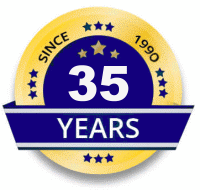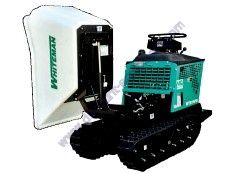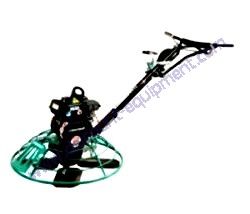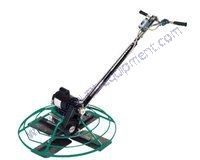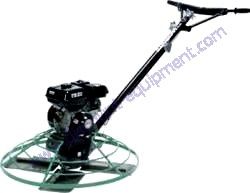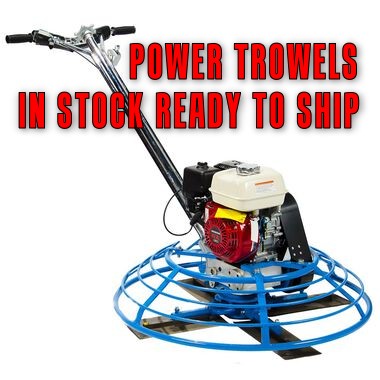Multiquip / Whiteman WTB-16PD Hydraulic Powered Track-Drive Buggy 16 cu. ft. Poly 180° Pivot Dump 22HP Honda Engine
Safety Information
Multiquip / Whiteman WTB-16PD Track-Drive Power Buggy
Do not operate or service the equipment before reading the entire manual. Safety precautions should be followed at all times when operating this equipment. Failure to read and understand the safety messages and operating instructions could result in injury to yourself and others.
SAFETY MESSAGES
The four safety messages shown below will inform you about potential hazards that could injure you or others. The safety messages specifically address the level of exposure to the operator and are preceded by one of four words: DANGER, WARNING, CAUTION or NOTICE.
SAFETY SYMBOLS
DANGER
Indicates a hazardous situation which, if not avoided, WILL result in DEATH or SERIOUS INJURY.
WARNING
Indicates a hazardous situation which, if not avoided, COULD result in DEATH or SERIOUS INJURY.
CAUTION
Indicates a hazardous situation which, if not avoided, COULD result in MINOR or MODERATE INJURY.
NOTICE
Addresses practices not related to personal injury.
Potential hazards associated with the operation of this equipment will be referenced with hazard symbols which may appear throughout this manual in conjunction with safety messages.
SAFETY INFORMATION
GENERAL SAFETY
CAUTION
„NEVER operate this equipment without proper protective clothing, shatterproof glasses, respiratory protection, hearing protection, steel-toed boots and other protective devices required by the job or city and state regulations.
„Avoid wearing jewelry or loose-fitting clothes that may snag on the controls or moving parts as this can cause serious injury.
„NEVER operate this equipment when not feeling well due to fatigue, illness or when under medication. „NEVER operate this equipment under the influence of drugs or alcohol.
„ALWAYS clear the work area of any debris, tools, etc. that would constitute a hazard while the equipment is in operation.
„No one other than the operator is to be in the working area when the equipment is in operation.
„DO NOT use the equipment for any purpose other than its intended purposes or applications.
NOTICE
„This equipment should only be operated by trained and qualified personnel 18 years of age and older.
„Whenever necessary, replace nameplate, operation and safety decals when they become difficult to read.
„Manufacturer does not assume responsibility for any accident due to equipment modifications. Unauthorized equipment modification will void all warranties.
„NEVER use accessories or attachments that are not recommended by Multiquip for this equipment. Damage to the equipment and/or injury to user may result.
„ALWAYS know the location of the nearest fi re extinguisher.
„ALWAYS know the location of the nearest first aid kit.
„ALWAYS know the location of the nearest phone or keep a phone on the job site. Also, know the phone numbers of the nearest ambulance, doctor and fi re department. This information will be invaluable in the case of an emergency.
POWER BUGGY SAFETY
DANGER
„ Engine fuel exhaust gases contain poisonous carbon monoxide. This gas is colorless and odorless, and can cause death if inhaled.
„ The engine of this equipment requires an adequate free flow of cooling air. NEVER operate this equipment in any enclosed or narrow area where free flow of the air is restricted. If the air flow is restricted it will cause injury
to people and property and serious damage to the equipment or engine.
„ NEVER operate the equipment in an explosive atmosphere or near combustible materials. An explosion or fire could result causing severe bodily harm or even death.
WARNING
„ NEVER use your hand to fi nd hydraulic leaks. Use a piece of wood or cardboard. Hydraulic fluid injected into the skin must be treated by a knowledgeable physician immediately or severe injury or death can occur.
„ Accidental starting can cause severe injury or death. ALWAYS place the ON/OFF
switch in the OFF position.
„ NEVER disconnect any emergency or safety devices. These devices are intended for operator safety. Disconnection of these devices can cause severe injury,
bodily harm or even death. Disconnection of any of these devices will void all warranties.
„ NEVER approach power lines with any part of the buggy unless all local, state/provincial and federal (OSHA) required safety precautions have been taken.
Use extreme caution when approaching high-voltage power lines.
CAUTION
„ ALWAYS inspect the surface over which you will travel. Look for holes, drop-offs and obstacles. Look for rough and weak spots on docks, ramps or floor. Look for oil spills, wet spots and slippery surfaces. Look for soft soil, deep mud and standing water. Watch for anything that might make you lose control or cause the power buggy to tip over.
„ ALWAYS clear away trash and debris. Pick up anything that might puncture the rubber tracks.
„ ALWAYS make sure aisles, ramps, doorways and passages are clear.
„ ALWAYS plan your work. Make sure you know where you will make your pickups, dumps and turns. Before you take a load, know where you will place it.
„ NEVER operate the power buggy facing backwards. In a backwards position, the
operator cannot properly activate the manual brake, emergency switch, grip the
handles or steer the machine. ALWAYS face in the direction of the bucket.
„ DO NOT operate the power buggy on unsafe haul roads, load areas, or dump areas.
„ DO NOT operate power buggy on excessive slopes with a grade higher than 20% (12°), forward and backward.
„ DO NOT unload material from the tub where the longitudinal and lateral slope are present at the same time.
„ DO NOT traverse with the tub lifted.
„ DO NOT operate power buggy on extremely uneven surfaces.
„ NEVER allow riders other than the operator on the power buggy.
„ ALWAYS secure the step plate (platform) in the upright position when using the power buggy over rough terrain.
„ DO NOT stand on the power buggy step plate (platform) when walking in rough terrain. Walk behind the power buggy.
DO NOT touch, lean on or reach through the dump mechanism or permit others to do so. NEVER climb on the power buggy or dump mechanism.
„ DO NOT operate the power buggy at excessive speeds. Reckless operation may cause accidents and severe injury. Slow down when approaching people, wet areas,
and going up and down grades. It is the responsibility of the operator to adjust speed, as necessary, depending on the conditions of the road or path.
„ ALLOW extra time to stop when operating the power buggy on wet surfaces or loosely graded materials.
„ DO NOT dump materials that are large and chunky. These types of materials may shift causing the power buggy to tip and throw the operator off the machine. The
power buggy is intended for dumping free-flowing and loose materials such as dry soil, slag, and wet concrete.
„ DO NOT dump materials from bucket while the power buggy is moving.
„ For walk-behind operation, the operator platform must be stowed and locked in the up position. The speed should also be reduced to 3 mph (4.8 kph) or slower.
NOTICE
„ ALWAYS ensure power buggy is securely placed on appropriate blocks or jack stands when performing maintenance requires elevation of the buggy.
„ ALWAYS make sure the power buggy’s parking brake is working properly. NEVER operate the power buggy with a defective braking system.
„ Ensure brakes are applied when leaving or when using on a slope.
„When parking on a slope, position the power buggy at a right angle to a slope. Ensure that the parking brake is engaged and holds the power buggy safely in place when parking on a slope.
„When filling or dumping DO NOT exceed payload capacity of power buggy.
„ ALWAYS be aware of traveling conditions. Reduce load if necessary.
„ DO NOT activate dump mechanism (tub) if buggy is facing a downhill slope.
„ DO NOT stand in front of or alongside the buggy when discharging a load.
„ ALWAYS block the power buggy with appropriate blocks when leaving the power buggy parked on a slope.
„ To prevent unexpected loss of control, DO NOT start engine on a sloping surface.
„ Ensure that both travel control levers work freely and return to their neutral position. DO NOT start engine unless the travel control linkage is working properly.
„ NEVER operate the power buggy with bad or worn rubber tracks. ALWAYS replace defective tracks with new ones.
„ ALWAYS make sure the hydraulic dumping mechanism of the tub is working properly.
„ Avoid sudden stops, starts and changes in direction. Operate the controls smoothly. DO NOT jerk the steering or any other controls.
„ NEVER attempt to work the control except from the operator’s position.
„ NEVER drive or tow the power buggy in traffic or on public roads.
„ ALWAYS keep the machine in proper running condition.
„ Fix damage to machine and replace any broken parts immediately.
„ The entire power buggy (tub, step plate, shroud, rubber track, etc.) should be cleaned after every use. Make sure there is no buildup of concrete, grease, oil or debris on the machine.
„ ALWAYS store equipment properly when it is not being used. Equipment should be stored in a clean, dry location out of the reach of children and unauthorized personnel.
„ ALWAYS place the fuel valve lever in the OFF position when the equipment is not in use.
RUBBER TRACK SAFETY
„ ALWAYS inspect the rubber track before each use. Be sure to check the tension and maintain the prescribed (regulated) tension.
„ ALWAYS drive slowly in areas where the road surface is unstable such as forests, some construction sites, and/or unpaved roads. High speed in these areas can result in breakage of the rubber track.
„ Remove any foreign objects such as tree branches, leaves, etc. caught between the frame and the rubber track, after each operation.
„ lf foreign objects are not removed between the frame and the rubber track, the gap between the rubber track and the frame will shorten, and this can make the rubber track more susceptible to cracks and wear.
„ Regularly inspect the condition of the sprocket, track roller, idler, and the imbedded metal guide for abrasion. Excessive or unusual abrasion or scarring can shorten the life span of the rubber track.
„ Enlarge the turning radius when turning and changing directions, in areas of high friction, such as asphalt, to avoid premature breakage of the rubber track.
„ In cases where the job site location is far away, transport the machine on a flatbed truck or similar towing vehicle.
„ Continuous operation over long distances for an extended period of time is not recommended.
„ Driving the rubber track through narrow passages on job sites can fold the edges of the rubber track. Excessive bending of the track can Iead to breakage.
„When inspecting the rubber track or its components, ensure that it is done on even ground and equipment has been turned off.
„When replacing worn or defective components, such as sprocket, track roller, idler or imbedded metal guide, replace with manufacturer’s recommended parts only.
„ ALWAYS use manufacturer’s recommended parts. Unspecified parts will shorten the life span of the rubber track.
„ Use the rubber track for the prescribed purposes only.
„ DO NOT burn used or damaged rubber tracks, as noxious fumes are emitted and can cause harm if inhaled.
„ In the case of Iong-term storage, avoid direct sunlight and keep indoors or under a protective cover.
„ If the unit will not be used for a long period of time, be sure to rotate the rubber track at least once a month to avoid stress being placed on one point continuously.
„When transporting the rubber track with a forklift, be aware that the prongs can damage the track.
„When replacing the rubber track, be sure the machine is placed on secure level surface. The possibility exists of the machine rolling over if placed on an uneven surface.
„ ALWAYS shut down the equipment (OFF) before removing or installing the rubber track.
„ DO NOT apply excessive force (prybar) when removing the rubber track.
ENGINE SAFETY
WARNING
„ DO NOT place hands or fingers inside engine compartment when engine is
running.
„ NEVER operate the engine with heat shields or guards removed.
„ Keep fingers, hands, hair and clothing away from all moving parts to prevent
injury.
„ ALWAYS shut down the engine before performing service or maintenance.
„ DO NOT remove the engine oil drain plug while the engine is hot. Hot oil will gush out of the oil tank and severely scald any persons in the general area of the power buggy.
CAUTION
„ NEVER touch the hot exhaust manifold, muffler or cylinder. Allow these parts to cool before servicing equipment.
„ Make certain the operator knows how to and is capable of turning the engine OFF in case of an emergency.
NOTICE
„ NEVER run engine without an air filter or with a dirty air filter. Severe engine damage may occur. Service air filter frequently to prevent engine malfunction.
„ NEVER tamper with the factory settings of the engine or engine governor. Damage
to the engine or equipment can result if operating in speed ranges above the
maximum allowable.
FUEL SAFETY
DANGER
„ DO NOT start the engine near spilled fuel or combustible fluids. Fuel is extremely flammable and its vapors can cause an explosion if ignited.
„ ALWAYS refuel in a well-ventilated area, away from sparks and open flames.
„ ALWAYS use extreme caution when working with flammable liquids.
„ DO NOT fill the fuel tank while the engine is running or hot.
„ DO NOT overfill tank and tighten fuel cap until you hear clicking, since spilled fuel could ignite if it comes into contact with hot engine parts or sparks from the ignition system.
„ Store fuel in appropriate containers, in well-ventilated areas and away from sparks and flames.
„ NEVER use fuel as a cleaning agent.
„ DO NOT smoke around or near the equipment.
Fire or explosion could result from fuel vapors or if fuel is spilled on a hot engine.
„ DO NOT leave the power buggy in the vicinity of ovens, furnaces or radiant heaters. Heat could raise the pressure of the fuel so that vented gas could ignite.
BATTERY SAFETY
DANGER
„ DO NOT drop the battery. There is a possibility that the
battery will explode.
„ DO NOT expose the battery to open flames, sparks, cigarettes, etc. The battery contains combustible gases and liquids. If these gases and liquids come into contact with a flame or spark, an explosion could occur.
WARNING
„ ALWAYS wear safety glasses when handling the battery to avoid eye irritation.
The battery contains acids that can cause injury to the eyes and skin.
„ Use well-insulated gloves when picking up the battery.
„ ALWAYS keep the battery charged. If the battery is not charged, combustible gas will build up.
„ DO NOT charge battery if frozen. Battery can explode. When frozen, warm the battery to at least 61°F (16°C).
„ ALWAYS recharge the battery in a well-ventilated environment to avoid the risk of a dangerous concentration of combustible gases.
„ If the battery liquid (dilute sulfuric acid) comes into contact with clothing or skin, rinse skin or clothing immediately with plenty of water.
„ If the battery liquid (dilute sulfuric acid) comes into contact with eyes, rinse eyes immediately with plenty of water and contact the nearest doctor or hospital to seek medical attention.
CAUTION
„ ALWAYS disconnect the NEGATIVE battery terminal before performing service on the equipment.
„ ALWAYS keep battery cables in good working condition. Repair or replace all worn cables.
LIFTING SAFETY
CAUTION
„ NEVER allow any person or animal to stand underneath the equipment while lifting.
NOTICE
„When lifting of the power buggy is required, attach a strap or chain of adequate lifting capacity to the lifting points on the frame. Tub will have to be placed in the dump position to gain access to the lifting points.
„ NEVER tip the engine to extreme angles during lifting as it may cause oil to gravitate into the cylinder head, making the engine start difficult.
„ DO NOT lift machine to unnecessary heights.
„ NEVER lift the machine while the tub is loaded with material.
„ NEVER lift the machine while the engine is running.
„ ALWAYS use ramps capable of supporting the weight of the power buggy and the operator to load and unload the power buggy.
TRANSPORTING SAFETY
NOTICE
„ ALWAYS shut down engine before transporting.
„ Tighten fuel tank cap securely and close fuel cock to prevent fuel from spilling.
„When transporting of the power buggy is required, place the power buggy on a flatbed truck or equivalent and tie down securely.
„ ALWAYS make sure all tie-downs and blocks are in place and the bucket is completely lowered in the flat (horizontal) position and securely latched.
„ Place chock blocks underneath wheel to prevent rolling.
„When transporting the power buggy on a truck or trailer, know the overall height to avoid contacting overhead obstructions such as bridges and power lines. Check
the truck and ramp capacities.
„ ALWAYS place the fuel valve lever in the OFF position before transporting
ENVIRONMENTAL SAFETY/DECOMMISSIONING
NOTICE
Decommissioning is a controlled process used to safely retire a piece of equipment that is no longer serviceable. If the equipment poses an unacceptable and unrepairable safety risk due to wear or damage or is no longer cost
effective to maintain (beyond life-cycle reliability) and is to be decommissioned (demolition and dismantlement), be sure to follow rules below.
„ DO NOT pour waste or oil directly onto the ground, down
a drain or into any water source.
„ Contact your country’s Department of Public Works or recycling agency in your area and arrange for proper disposal of any electrical components, waste or oil associated with this equipment.
„When the life cycle of this equipment is over, remove battery (if equipped) and bring to appropriate facility for lead reclamation. Use safety precautions when handling batteries that contain sulfuric acid.
„When the life cycle of this equipment is over, it is recommended that the unit frame and all other metal parts be sent to a recycling center.
Metal recycling involves the collection of metal from discarded products and its transformation into raw materials to use in manufacturing a new product.
Recyclers and manufacturers alike promote the process of recycling metal. Using a metal recycling center promotes energy cost savings.
EMISSIONS INFORMATION
NOTICE
This equipment conforms with applicable Environmental Protection Agency (EPA) and California Air Resources Board (CARB) emission regulations.
The gasoline engine used in this equipment has been designed to reduce harmful levels of carbon monoxide (CO), hydrocarbons (HC) and nitrogen oxides (NOx)
contained in gasoline exhaust emissions.
Mandated Emission Components:
„ Engine, EPA certified
„ Fuel cap, EPA certified
„ Fuel and vapor recovery hoses, EPA certified SAE J30R7 or SAE J30R14T2
„ Charcoal canister, EPA certified Miscellaneous Parts Associated with Emission System:
„ Hose clamps and retainer brackets
„ Roll over valve vapor recovery valve
„ Steel fuel tank
Tampering with or altering the emission control system may increase emissions beyond the legal limit. Do not remove or alter any part of the system.
Additionally, modifying the fuel system may adversely affect evaporative emissions, resulting in fines or other penalties.
The emission control system is valid only for the United States, its territories and commonwealths to include Canada.
Emission Control Label
The emission control label is an integral part of the emission system and is strictly controlled by regulation(s).
The label must remain with the engine for its entire life.
If a replacement emission label is needed, please contact your authorized engine distributor. |
